72 F. average high on May 27.
74 F. high on May 27, 2014.
May 27, 1930: Great Empire Builder Tornado. A direct hit derailed famous train in Norman County.

It Only Takes One
I live in a state of perpetual paranoia. Are the kids safe and healthy? Is my wife upset? What about accounts receivable and payroll? And is this the year an EF-5 tornado hits a downtown? In 2010 Minnesota experienced a mind-blowing 145 tornadoes. Since then it's been fairly quiet.
We're going on 10 years since a major Category 3 or stronger hurricane hit the U.S. coastline. Odds favor fewer hurricanes in 2015 with a strong El Nino, but all it takes is one.
Meteorologists worry about apathy setting in - technology has lulled us into a false sense of security. "I can wait until the last moment to evacuate inland or run for the basement!" Were residents of Houston and Austin expecting historic flooding? Probably not.
A low-grade case of weather-paranoia is always a good thing.
Yesterday's light-switch summer day was a tonic for the soul. Expect more 80s today, a few growls of thunder Friday; then a a cooler, drier, sunnier weekend with highs in the 60s. Only the brave and foolish will be in the lake.
The mercury brushes 80F again next week as dew points top 60. Men will sweat, women will glow, dogs will pant. Summer the way it was probably meant to be at this latitude.
Just make it a habit of keeping a watchful eye on the western sky - OK?

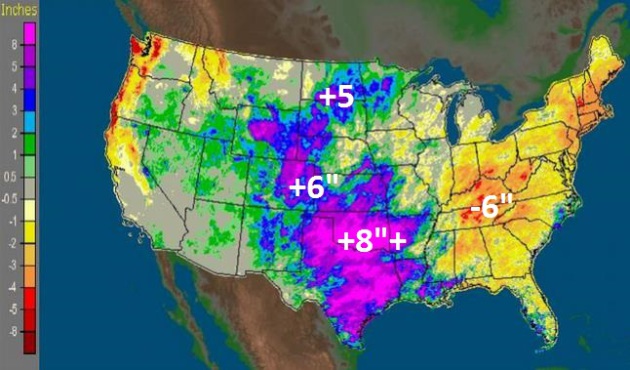
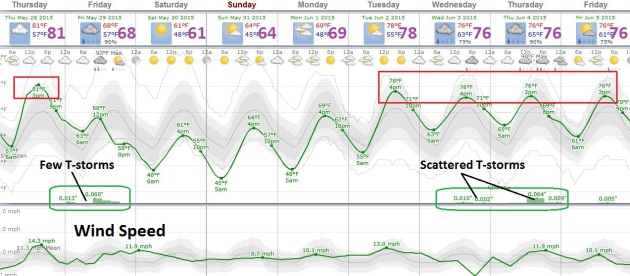
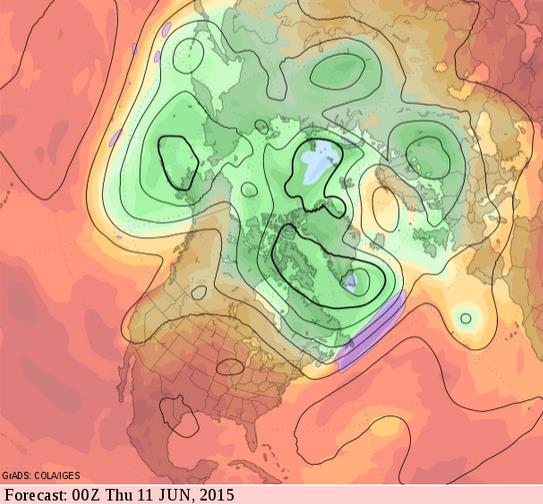
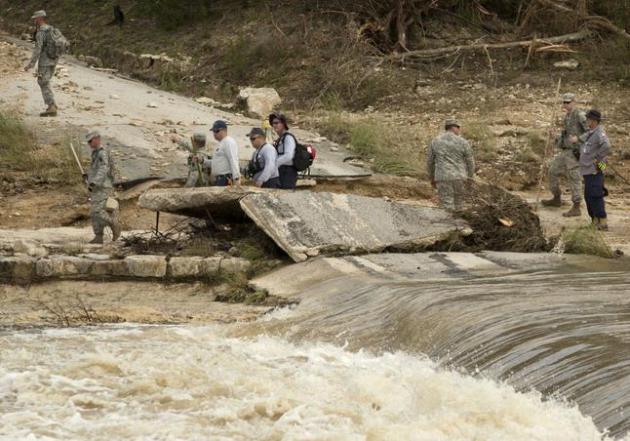
Photo credit above: "Texas National Guard soldiers and members of the Texas Task Force 1 search for bodies on the banks of the Blanco River after the flood in Wimberley, Texas, on Tuesday May 26, 2015." (Jay Janner/Austin American-Statesman/TNS)


Photo credit above: "The cement stilts of the home belonging to the Carey family of Corpus Christi, Texas, are all that remain the home was swept away by the Blanco River early Sunday morning during a flash flood in Wimberley, Texas, on Monday, May 25, 2015. The Carey and McComb family, from Corpus Christi, Texas, have been missing since." (Rodolfo Gonzalez/Austin American-Statesman via AP)

Photo credit above: "With downtown Dallas in view, water from the Trinity River floods the area below the Sylvan Avenue bridge Monday, May 25, 2015, in Dallas. Several people were reported missing in flash flooding from a line of storms that stretched from the Gulf of Mexico to the Great Lakes." (Louis DeLuca/The Dallas Morning News via AP).

Texas Rains In Keeping With Climate Change. Here's an excerpt of a statement from The Union of Concerned Scientists: "...Below is a statement by Brenda Ekwurzel, senior climate scientist at the Union of Concerned Scientists. “Around the world, April ocean temperatures have broken records. The Gulf is no exception. The hot Gulf waters combined with a brewing El Nino have contributed to some of the intense precipitation in Texas and beyond. “In addition, because a warmer atmosphere holds more water, climate change means that when it rains it’s more likely to pour. In Texas, the heaviest rainfalls have increased more than 16 percent over the long-term average. This trend will only increase as temperatures rise even more..."
Photo credit above: "A destroyed car is submerged in the Blanco River in Wimberley, Texas, after the flood on Tuesday May 26, 2015." (Jay Janner/Austin American-Statesman/TNS).
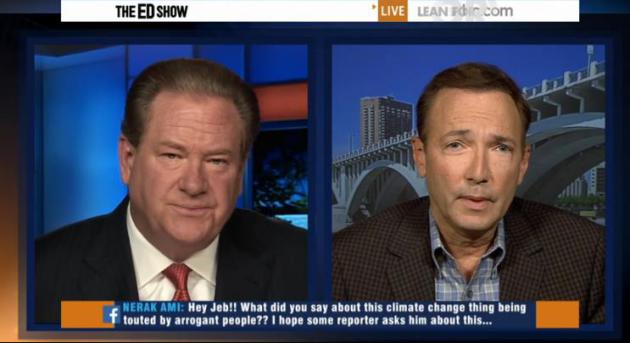
"A Weather and Climate Trifecta". On Wednesday I had a chance to chat with Ed Schultz on his MSNBC Show (ironic that he was sitting in Detroit Lakes and I was at an uplink facility in Minneapolis) and he asked me to try and put the Texas flooding into context. How much is natural variability vs. thumbprints of climate volatility. The entire 7 minute segment is here.


NOAA Issues Its Forecast For The 2015 Atlantic Hurricane Season.
Yes, El Nino should mean more wind shear over the tropics and fewer
tropical storms and hurricanes. Then again all it takes is one. Here's
the intro to a story at ABC News: "The coming hurricane season
in the Atlantic Basin is expected to be calmer than normal, but that
doesn't mean the East Coast is off the hook, according to a forecast
issued today by the National Oceanic and Atmospheric Administration's
Climate Prediction Center. There's a 70% chance that the hurricane
season in the Atlantic will spawn six to 11 named storms between June 1
through Nov. 30, and of those named storms, three to six could become
hurricanes, including up to two major hurricanes of categories 3 to 5
during the season, forecasters said..."
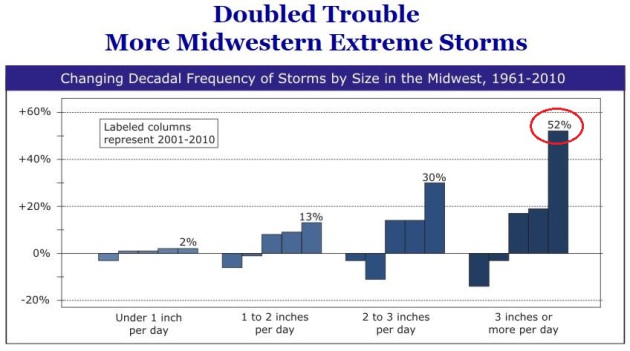
Graphic credit above: "Changes in frequencies of storms in the Midwest, by category of storm size for five decades, 1961-1970 through 2001-2010. Labeled changes are for the last decade. Comparisons are to frequencies in 1961-1990."
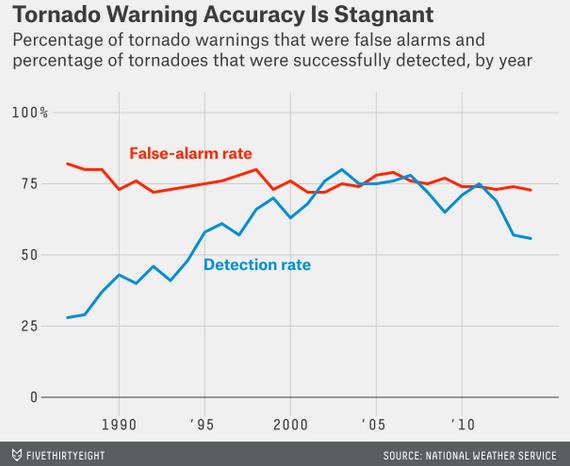
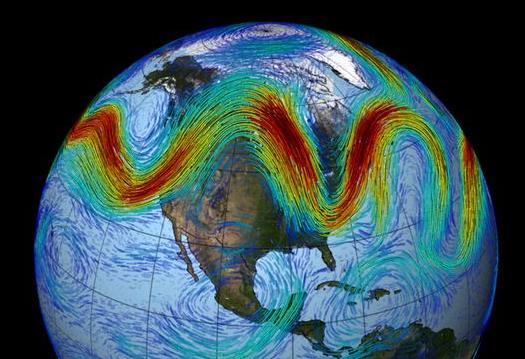
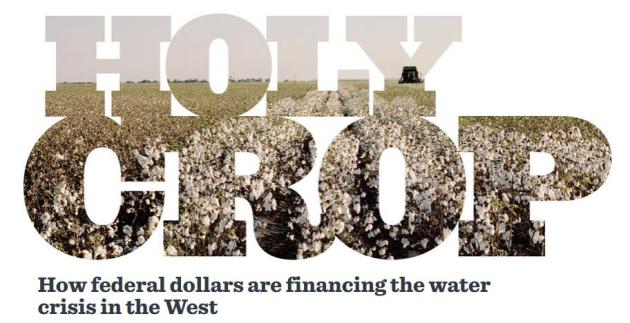

File Photo credit: "In this April 2, 2015 file photo, Denise Hurst shows her drought-tolerant garden she planted with the help of a city program that offers rebates of $3.50 per square foot for residents who tear up their water-guzzling lawns and plant drought-resistant plants that require little to no watering in Long Beach, Calif." (AP Photo/Nick Ut, File).

At least 800 people have died in a major heatwave across India, melting roads in New Delhi as temperatures neared 50C.
Hospitals are on alert to treat victims of heatstroke and authorities advise people to stay indoors with no end in sight to the searing conditions.
In the worst-hit state of Andhra Pradesh, in the south, 551 people have died in the last week as temperatures hit 47C on Monday.
- See more at: http://www.skynews.com.au/news/top-stories/2015/05/26/india-heatwave-kills-800-as-roads-melt.html#sthash.XKI2zr9B.dpuf
Hospitals are on alert to treat victims of heatstroke and authorities advise people to stay indoors with no end in sight to the searing conditions.
In the worst-hit state of Andhra Pradesh, in the south, 551 people have died in the last week as temperatures hit 47C on Monday.
- See more at: http://www.skynews.com.au/news/top-stories/2015/05/26/india-heatwave-kills-800-as-roads-melt.html#sthash.XKI2zr9B.dpuf

TODAY: Sticky sun, warmer than average. Winds: S 20. High: 83
THURSDAY NIGHT: Chance of a T-storm. Low: 64
FRIDAY: Unsettled. Showers and T-storms likely. High: 72
SATURDAY: Cool sunshine, less humid. Winds: NE 10+ Wake-up: 49. High: 63
SUNDAY: Lots of sun, a bit warmer. Winds: SE 10-15. Wake-up: 48. High: 68
MONDAY: Some sun, isolated T-storm. Wake-up: 53. High: 75
TUESDAY: Warm sun, feeling stickier. Dew point: 61. Wake-up: 61. High: 81
WEDNESDAY: Muggy, scattered T-storms. Wake-up: 63. High: 83
Climate Stories....
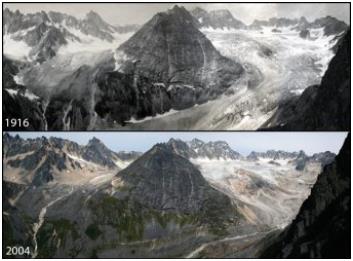
Alaska Climate Project Captures Climate Change in a Thousand Wows. Here's a clip from a story at InsideClimate News:
"It isn’t hard for Denali National Park ecologist Carl Roland to see
the ravages of climate change when he compares photos of Hidden Creek
Glacier taken 88 years apart. In the 1916 photograph, the Alaskan
glacier wraps around a stony peak like an icy claw. But by 2004, the ice
has released its grip and receded more than a mile..."
Photo credit above: "The
effect of climate change is dramatically apparent in photos of Denali
National Park's Hidden Creek Glacier taken 88 years apart. Credit:
Denali National Park."

Tropical Storms Get Fiercer With Climate Change - Study.
Fewer storms overall, but the storms that do spin up tend to be more
intense - a pattern we're seeing with extra-tropical storms as well.
Here's an excerpt of an article at RTCC.org that caught my eye: "...The
two scientists reckoned that even slightly higher average temperatures
would mean more energy and therefore higher wind speeds at sea as well.
They report in Nature Climate Change that they found what they were
looking for: a pattern. On average, storm wind speeds had increased by
1.3 metres a second and there were 6.1 fewer tropical storms a year
worldwide than there would have been if land and water temperatures had
remained constant..."
File photo: NASA, Johnson Space Center.

What Would Ronald Regan Do About Climate Change?
Set the bar high - throw out an impossibly aggressive goal, and then
sit back and wait for the markets to react. Here's an excerpt of an
Op-Ed at Forbes: "...So
advice to today’s GOP: if you seek a truly Reaganite approach to
climate change, start by writing an SDI-style speech about the problem
with the object of making fossil fuels obsolete not by making them
artificially more expensive through a tax, but by coming up with new
energy sources that are just as cheap and scalable to the whole planet.
Environmentalists will howl at the moon with indignation, just as
liberals hated Reagan’s SDI. One thing everyone forgets: SDI was very
popular with the American people. I suspect a Reaganite research and
development emphasis on energy would be much more popular than a carbon
tax or Obama’s Rube Goldberg “clean power plan” that does nothing
serious about energy transformation..."
File photo above: "President
Ronald Reagan points to raised hands during a rare national address
outside the White House on Tuesday, August 12, 1986 in Rosemont,
Illinois." (AP Photo/Scott Applewhite).

Editorial: Climate Change's Effect on U.S. Military. A threat multiplier indeed. Here's an excerpt of an Op-Ed from the editorial board at The Anniston Star: "...Gunn,
who is now president of the Institute for Public Research at CNA Corp,
warned of looming adaptations required of the U.S. armed forces, which
are "the best educated, best trained, best equipped, best motivated and
most combat-experienced military the world has ever seen." The math is
pretty basic. Weather extremes caused by climate change put a heavy
stress on agriculture. Food shortages lead to unrest. Tensions rise so
high that civil war breaks out. From there, a destabilized region has
the potential to cause a massive disruption in security. And at some
point, the U.S.'s "best educated, best trained, best equipped, best
motivated and most combat-experienced military" will be called on to
confront and contant the fighting..."
Photo credit above: "U.S.
soldiers, left, participate in a training mission with Iraqi army
soldiers outside Baghdad, Iraq, Wednesday, May 27, 2015. Islamic State
extremists unleashed a wave of suicide attacks targeting the Iraqi army
in western Anbar province, killing at least 17 troops in a major blow to
government efforts to dislodge the militants from the sprawling Sunni
heartland, an Iraqi military spokesman said Wednesday." (AP Photo/Khalid Mohamm

Climate Change Denial Is A Threat to National Security. Here's a snippet of an article from Phil Plait at Slate: "...The only doubt is manufactured, sole-sourced by the fossil fuel industry. Senators, Congress critters, “think tanks,” sponsored by fossil fuel (and using the same tactics as the tobacco industry)—the doubt they sow is as fake as $3 bill, and just as obvious (and embarrassing).
From ridiculous and patently false claims that global warming has
slowed, that the world can’t be warming because winter still exists,
that (seriously) plants like carbon dioxide so we’re just feeding them;
these people’s only purpose is to slow any real progress on fixing the
planetary mess we’re in..."
Image credit above: Shutterstock/Barnaby Chambers.
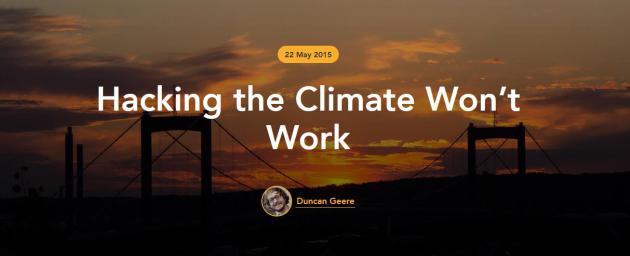
Hacking The Climate Won't Work.
Don't count on geo-engineering to save us if we get to the point where
we drag our feet and then have to take action - quickly. Here's an
excerpt of a thoughtful article at How We Got To Next: "...In
recent years, several such proposals involve artificially modifying the
climate. Climate scientists refer to these sorts of ideas as
geoengineering, as they involve tweaking natural systems on a grand
scale, and remain generally skeptical of them because they avoid
addressing the real problem — that mankind is consuming resources at an
unsustainable rate. There are some limited cases in which geoengineering
techniques can have a positive contribution to the fight against
climate change, though. (We’ll look at some of those examples in a
subsequent article.) But more often than not, geoengineering schemes are
expensive, impractical or ineffective..."
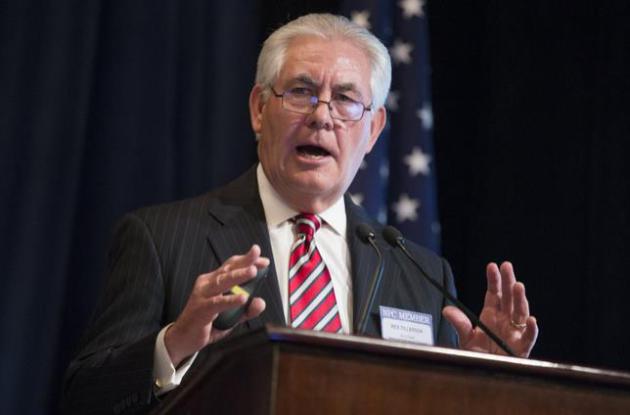
File photo credit: AP Photo/Evan Vucci.
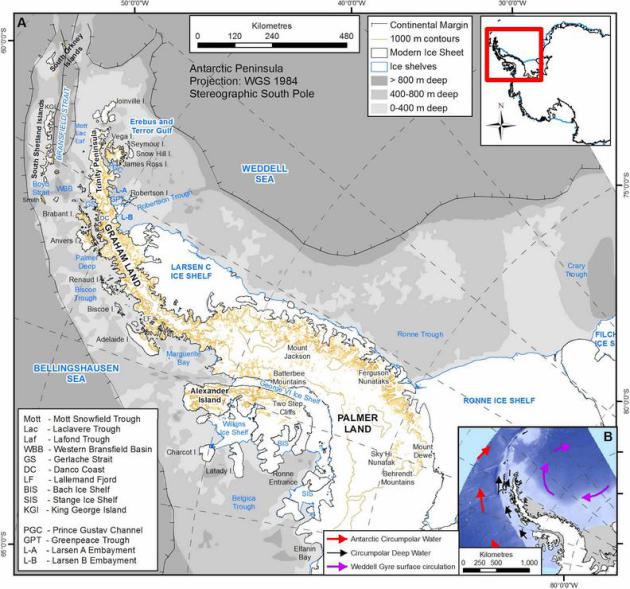
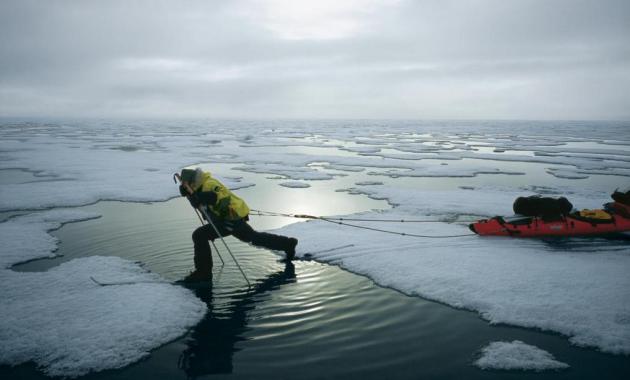
Photo credit above: "Polar explorer Thomas Ulrich skis across a melt pond on sea ice near Champ Island, in Russia's Franz Josef Land, in 2009. Climate change is making Arctic ice melt faster, making it more perilous to cross." Photograph by Borge Ousland, National Geographic.

No comments:
Post a Comment